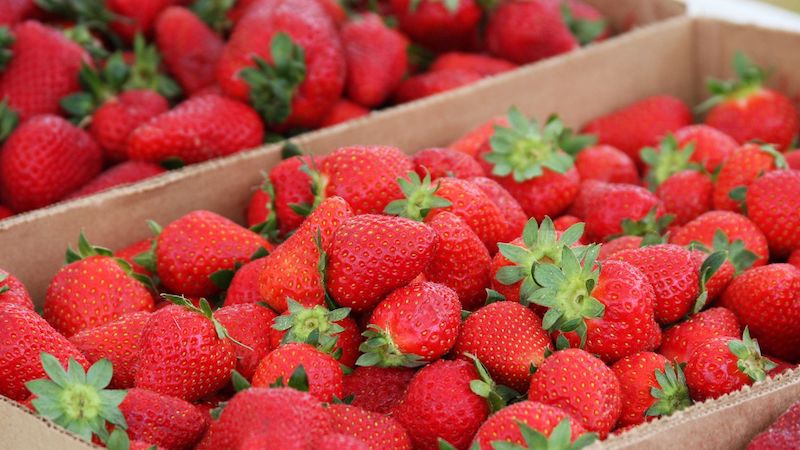LITTLE ROCK, Ark. – Arkansans eager for strawberry season have good news: the wait is over.
This year, strawberries arrived one to two weeks earlier than usual, with the peak season anticipated for late April or early May.
“A typical peak is closer to Mother’s Day, but this year, we’ll peak earlier,” said Amanda McWhirt, extension fruit and vegetable horticulture specialist at the University of Arkansas System Division of Agriculture. “The early warm temperatures allowed us to protect the plants during cool spells. While there was some damage to the crowns from ice and snow, we managed to cover them with row covers. With March’s warm days, the plants came out of dormancy and started growing.”

Strawberries are vulnerable to damage in freezing temperatures, but most growers shielded their plants with row covers.
Randy Arnold, president of the Mid-American Strawberry Growers Association, noted minor damage to some of his 75,000 strawberry plants near Alma.
“I’ve noticed slight damage and smaller nubbins, which we sell as seconds,” Arnold said. He picked his first strawberry on April 1 and has been harvesting continuously to meet demand. The Arnold Family Farm Store on Highway 71 in Alma often has a waiting list.
“The demand is exceptional,” Arnold remarked. “We harvested 900 pounds today, all sold by 1:30 p.m.”
In Central Arkansas, Barnhill Orchards was bustling with picking and selling quarts of berries at its drive-through on 277 Sandhill Road in Lonoke.
“Our berries came in about a week early,” said Ekko Barnhill, sales manager. “We’re introducing a new variety, Ruby Junes. They’re large, red, and sweet. Our customers adore them.”
This year, Barnhill’s family planted 8 acres of berries, one more than last year, with expectations for peak harvest around the first or second week of May.
“As temperatures rise, berries mature faster,” Barnhill explained. “The extra warmth also enhances their sweetness.”
For information on extension programs in Arkansas, contact your local Cooperative Extension Service agent or visit www.uaex.uada.edu. Follow updates on Twitter and Instagram at @AR_Extension. For details on Division of Agriculture research, visit the Arkansas Agricultural Experiment Station website at https://aaes.uark.edu and follow on Twitter at @ArkAgResearch. Explore more about the Division of Agriculture at https://uada.edu/ and follow on Twitter at @AgInArk.


